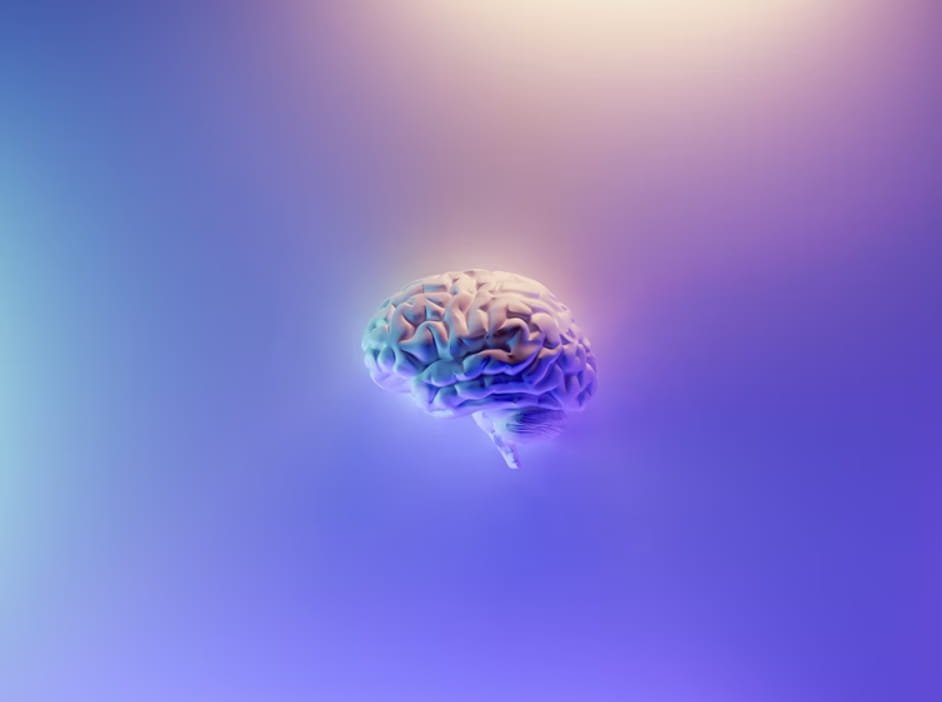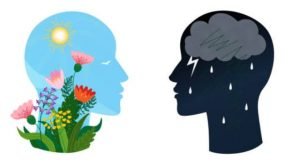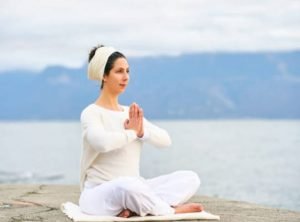
by admin | Jun 10, 2022 | Mind
What Happens In The Brain When We Are Afraid
The Science Behind One Of Our Primal Emotions Fear is one of our driving forces. It can make us run faster, think more critically, and have way more strength than usual within mere seconds of spotting a threat. It can also be paralyzing, however, or make us think irrationally in completely normal situations.
From goosebumps to phobias, the different processes we can go through when we are afraid are proof that this is one complicated emotion. Here we try to break down what happens in our brains when we see danger and start being scared.
Some Basics

As we mentioned before, fear is one of our primal emotions. It’s been hardwired in the brains of almost all species since the dawn of time. It’s a very complex reaction that holds within it the simplest reflexes a snail has when something touches its antennas as well as the paralyzing anxieties some people have seemingly out of nowhere.
“Extreme” fear reactions, however, are usually what we think about when someone mentions fear. These include surges of strength, critical thinking, and changes in the chemistry of our bodies and are only possible thanks to centuries of evolution. Usually, what happens when we get scared is our heart rate and blood flow increase, allowing for muscles to fill with blood and be ready to react.
Our body also releases large doses of epinephrine and glucose, creating a pool of energy waiting to be used at a moment’s notice. This is all in preparation for the immediate response we decide would be best and similar processes happen in almost all animals. Funnily enough, goosebumps are also an evolutionary idea – the muscles at the base of each hair tighten, which makes it stand up – this has the purpose of changing the silhouette of the animal, making it look bigger and more scary.
A trick which we have kept through the centuries, regardless of the fact that it doesn’t change our physical appearance as much. Where we differ from other species, however, is that we have evolved to achieve an alert state or even a fear response to certain written words and notes.
The first can be explained with an example of when we see a sign that says “dangerous road ahead” – we start being more careful, and our senses are sharpened – essentially achieving an alert state.
The second can be, for instance, when someone informs you that there is a flood – your heart rate speeds up, your muscles tense, and you immediately start thinking of how you can escape – this is the fear response.
How Our Brains React

Our answer to fear starts in a part of the brain called the ‘amygdala,’ which is a small cluster of nuclei right in the center of our brains. It’s responsible for our fight or flight reaction and readies our bodies for one of these two options by releasing different stress hormones and preparing motor functions.
Dilated pupils, increased heart rate, and redirection of stronger blood flow are all effects of what the amygdala does. The amygdala also sends signals to the hypothalamus, which works with the hormonal and nervous systems. This is how the body starts preparing the different chemicals and processes to react to the threat.
Some of the chemicals our bodies release when we are scared are similar to those we have when we are excited, which explains why some people enjoy extreme activities like bungee jumping for example. The brain goes through most of the processes related to fear but realizes that the situation isn’t that threatening, so we don’t stay in a state of panic, so instead, we enjoy the boost our bodies have.
This means the “sensible thinking” part of our brains overpowers the primal automated response we have to threats, but we still get to experience the rush in the beginning.
This distinction is made by another very important part of our brains. This part is highly active when we are afraid, and it’s called the hippocampus. Its job is to figure out if the threat is as real as the amygdala deems it and control our response. If our fear response isn’t justified, the hippocampus sends out a message to dampen the amygdala’s activity and to calm us down.
Conclusion
Fear is a complicated emotion.
It’s a part of almost all animals, and it’s the best emotion to keep us safe in threatening situations. This doesn’t mean, however, that fear is always rational, which is why our brains constantly go through different checking mechanisms to make sure the valuable energy we dedicate to different responses isn’t wasted.
How fear works can be separated into two main parts – when we are afraid, some processes are automated while others are our conscious decisions. This divide allows us to control our emotions and reactions and get out of the scary situation as quickly as possible. Do you know other interesting things about fear? Comment below!

by admin | Jun 9, 2022 | Medicine
What is Ayurveda and Its Importance?
Ayurveda is a traditional holistic alternative medicine with its routes in India.
The name Ayurveda translates as ‘science of life’ or life science in Sanskrit. Ayur means “life” and Veda means “science. It’s system of medicine relies mostly on plant support to produce its major component. ‘Home remedies’ are popular among Indian households, where herbs, spices, seeds, roots, leaves, stems, petals, and flowers are commonly used. It is not uncommon to find that certain family members can cure even complicated disorders with simple and effective formulas that, at times, have shown remarkable results.
Around the world, we are seeking a comprehensive and complete natural healing system that is not merely some curious form of old-fashioned folk medicine, but a rational, scientific system that is sensitive to nature and the environment. Ayurveda provides precisely this type of treatment since it is an ancient medical system that has a long history of clinical excellence and provides a natural approach to treatment, including diet, herbs, and massage.
Ayurveda teaches us how to improve our immune system, eat the right foods for our body type, how to use our sexual energy correctly, how to rejuvenate, and how to live a conscious life that can lead us to achieve greater success in all we do.
Natural wisdom such as Ayurveda offers us not only health benefits but also happiness and spiritual clarity.
Theories and Principles of Ayurveda

Ayurveda is an ancient healing system that makes extensive use of herbs and revolves around imbalances and vitiations of the three humours (Doshas). Five elements are necessary for all living systems: Air (Akash), Water (Jal), Fire (Agni), Earth (Prithvi) and space. As these elements change and interact, they can be simplified into three Vitiations (Doshas). A healthy body remains in harmony and balance when those doshas are balanced. However, a diseased state sets in when their balance is disrupted.
There are three doshas; Vata (Wind), Pitta (Bile) and Kapha (Phlegm) and a person is determined by the dominant dosha that determines their character, whether that is Vata or Pitta or Kapha.
Vata – All movements in the body and mind are controlled by Vata, which is composed of air and ether.
Pitta, the result of fire and water, governs heat, metabolism, and transformational change in the body and mind.
Kapha – The physical structure of the body is provided by Kapha, a substance made up of earth and water that fixes the bodys elements together.
There are three doshas present in each individual, with one or sometimes two doshas predominating. Ayurvedic diets, medicine and spiritual practises seek to redress the balance in the doshas ensuring health and harmony resides.
Treats cause not symptoms

Essentially, Ayurveda is a form of Hindu Medicine that focuses on root-cause treatments. According to Ayurveda, the whole body is a mutually interacting system. An imbalance in one part can affect the entire body. According to Ayurveda, you should strive to achieve complete health.
Since allopathic techniques are based on the idea of rapid and immediate relief, patients usually get rid of their problems for a short duration, but the cause of the disease is not eliminated, so ultimately there is a risk of the disease recurring in the future. The antigens in allopathic therapies introduce a chemical, which will have the opposite effect than what the body produces. Hence, there may be a risk when it comes to the power and quantity of a drug.
Unlike Western medicine, Ayurvedic medications utilize natural and herbal treatments and supplements, which do not have side effects. In general, Ayurveda does not believe in antigens and antidotes, and these practices are very rarely applied,
An important principle of Ayurveda is not suppressing the body system but searching for the cause and curing it. There is little risk of side effects with such treatments, and the benefits will last a lifetime. This treatment gives you a comprehensive health treatment that works on all the systems in your body, so you feel better all over.
When you eat one apple a day, and then one day suddenly eat three, it won’t cause you any problems. But, if you take two sleeping pills a day, and then one day you take four, then it will be dangerous; Ayurveda supplements are mostly made from fruits, vegetables, and herbal gifts from nature.
There are some plants and fruits that are rarely found in the wild that are very effective against some diseases. Ayurveda students of the past learned the classification of every single kind of plant; they took a long time to find those precious gifts in the jungles, rock formations, & mountains. During the age of globalization, companies and groups are doing that work collectively, so we can now use those techniques, which were previously very costly even for kings.
Ayurveda is holistic in nature. It not only gives the body what it needs but also prevents harmful substances from entering the body. Pareja is the concept of limiting harmful foods and supplements that interfere with the treatment in Ayurveda.
Ayurvedic techniques have been developed in the ashramas of Hindu saints and researchers. Hundreds of years of generation-to-generation research went into creating this medical care. Being one of the oldest cultures in the world, India is well acquainted with Ayurveda and has many decades of history using it for health care.
In this modern age, when pollution and intoxication are permeating our bodies, and a normal human is becoming weaker due to overindulgent lifestyles, Ayurveda, along with yoga and exercise, is the key to having a strong body and a clear mind.
With all the benefits of Ayurveda, the demand for ayurvedic medicines is expected to rise in the upcoming years. Several studies have shown that many patients have found the ayurvedic treatment to be effective, thus ayurveda will likely revolutionise medicine within the next few decades. A return to the old ways is the new future.

by admin | Jun 9, 2022 | Health, Mind
What is Reiki?
Reiki is a Japanese technique for stress reduction and relaxation that also promotes healing. It can be used for self-healing or as an alternative medical treatment. Reiki is said to soothe both the body and mind.
Reiki is a holistic healing therapy that was developed over the course of more than two hundred years by Mikao Usui. Reiki can be used to heal many different types of ailments, such as emotional, physical and spiritual ailments. With long-term sessions, people may experience lasting relief from chronic pain, stress, depression, and anxiety.
What is the goal and how is it carried out?

The goal of reiki is to align the person’s energy with his or her higher self in order to achieve complete balance. This process removes any blockages that are preventing this healthy flow of energy. Reiki healing is done through the use of hands-on treatments, meaning that it does not require any needling or invasive techniques. It is also possible to deliver it by distance healing.
It can be delivered in person, by phone, or through the internet. Although it is a form of energy healing that originated in Japan it has spread worldwide. Practitioners believe that this energy may be channelled into people’s aura to promote self-healing from injury and disease. Reiki practitioners use their hands or sometimes their whole body to channel the life-giving energy to heal another person, either through physical contact or at a distance, even if they are not present at the time.
What does reiki mean?

The word “reiki” is made up of two words ‘’rei’’ meaning Gods wisdom or higher power and ‘’Ki’’ meaning life force energy. There for one could say it has an overall meaning of “universal life energy.” Reiki masters are thought to have the ability to channel this universal energy and transmit their life force through their hands into other people and objects around them in order to heal them.
Reiki Symbols
Symbols are used in reiki to invoke the desired energies. Symbols can be drawn on the body with a stick of incense, or they can be projected onto a person or an object. When we create symbols with our hands in reiki sessions, it creates an energetic circuit which is then sent to the recipient for healing. Symbols are objects, characters, words, or pictures that represent something abstract. They are often created by drawing a shape in the air with our hands and represent spiritual ideas like peace and love.
The symbols in Reiki are not words. They are drawn images that represent universal life force energy. The symbols in reiki were developed by Mikao Usui, a Buddhist monk who believed that the symbols could help to heal others and themselves.
Cho Ku Rei is one of the most known reiki symbols, but the words Cho Ku Rei carry an interesting mix of meanings and beliefs, for example: it is a Japanese term meaning to write quickly. It was first identified by the author of the book “Writing with speed: how to be productive in less time” (2006), who noted that the velocity of writing increases with practice and can be increased even further through a series of mental routines.
Cho Ku Rei is not about how many words one writes every minute; rather, it focuses on how many finished words one writes in a specific time period. Cho Ku Rei is also the Japanese belief that a person’s spirit leaves their body when they sleep and wanders off to various places. It’s believed that the spirit of someone who died will return to visit their home or may stay with family members.
Japan is one of the few countries in which it is still socially acceptable to wear white after a death. Cho Ku Rei, or “death attire,” is seen as an extension of deep respect for the deceased.
This custom has its roots in ancient Japanese culture, and it came from the Buddhist tradition that encouraged individuals to wear white clothing after death. The Buddhist tradition started to spread throughout Japan, with people from different sects all following this trend. Eventually, it became a tradition that helped with mourning and grieving when a family member dies. Mourning rituals have been followed in Japan for centuries and Cho Ku Rei has been an important part of this ritual since its inception.
Cho Ku Rei, in Usui Reiki meaning “source of light,” is a power symbol that has been used since the days when reiki was first brought to the West. It is a systematic procedure with many steps, and it has been designed to bring about specific results. The practitioner can use it for self-development or for healing others in various situations.
Other symbols are:

Sei He Ki – The harmony symbol – for when you are in need of purification and need balance and harmony to be restored.
Hon Sha Ze Sho Nen – The distance symbol – it means having no present past or future and therefore transcends time and space.
Who can benefit from reiki?
Reiki can be beneficial for everyone who is willing to try and experience it. But does this mean that it is a good idea for every member of the family to get a session from a reiki healer? Reiki practitioners believe that the benefits of reiki are not limited to their patients. As such, they recommend that any person in the family gets at least one session with them. This way, they can maintain their mental and physical health as well.
Whilst it may not be the choice of healing for everyone, it is for someone who wants to deeply heal. Its gentle, non-invasive and very relaxing.
Who can train in reiki?
It is a technique that has been passed down through generations. The power of Reiki comes from an energy field or life force, which people can tap into and direct with their thoughts. Anyone can use reiki for beneficial purposes – it does not require any complex training to get started and anyone can learn how to do it themselves with guidance from someone who already knows how, such as a reiki master.
Reiki can be used by anyone who is willing to learn. It can provide a sense of peace and a feeling of being cared for. Reiki is becoming increasingly popular in the workplace. There are companies that offer Reiki as an employee benefit in order to help their employees feel cared for.
So, if you are looking for a new healing modality, this one is worth exploring.
Disclaimer Note: It’s important to note though, that just because something is natural does not mean zero risk. While many natural therapies are very low risk there still may be complications, contraindications and contra-actions.
The internet is full of information on how you can cure yourself with natural remedies, therapies, fitness equipment and more, but we recommend that you seek out a Qualified Natural Practitioner, Reiki or Energy medicine expert and always consult a Doctor before trying any new things. Never stop taking any prescribed medication without speaking to your health practitioner first.
Thankyou – This article is for entertainment and informational purposes only.

by admin | Jun 9, 2022 | Mind
What Is The Growth Mindset ?
If we put things black on white, we’d realize that the majority of humans come to this world with the same “specs”, so to speak. We all have a brain, body and all our bodily systems work on the same principles and run the same chemistry. But what is it that actually makes a person successful and different from other people? Well, the secret, perhaps, lies not in lucky circumstances, but in the mindset, which in turn controls our actions and reactions.
Think About It…
If you look into your own life, you may come to realize that though you are creative, your mindset has probably, at one point, had a big influence on you and your overall success.
Contrary to popular belief, skills and knowledge are not a given, but are rather developed through time.
How Important Is Mindset, Really?

Now, setting bad luck and unsuccessful ventures aside, we can tell you one thing – Your thought patterns lead to certain actions and behaviors. Even more so, your thoughts and feelings are literally the CODE of your brain’s workings. Whatever you think about, you attract and find more of!
For example, if a friend or a colleague starts talking to you about a potential business idea, do not instantly start talking about why it can’t happen. If you fix your mindset on the reasons why it cannot happen, you will only find more and more reasons why it can’t happen. Instead, try and think of those things as “obstacles along the way to success”, rather than “reasons why it cannot happen”.
Of course, we are not telling you to be delusional and emit fake positivity about projects, relationships, business ideas, etc. What we are telling you is that you should consistently put in the work to shift and transform your own mindset to “What is the solution for this?” rather than “Here’s why this is impossible”.
Fixed Mindset VS Growth Mindset

Before transitioning and transforming your mindset to what we call “growth mindset” you have to become aware of your current mindset about certain things. In most cases, we, people, have limiting beliefs about many aspects of our lives. These limiting beliefs cause us to stagnate on one level of development, which in turn leads to the inability to outdo yourself.
This is EXACTLY what the “fixed mindset” is!
Here are some traits of the fixed mindset:
- You give up easily
- Putting extra effort in feels bad
- You don’t see how you can further develop your skills
- You stay true to a certain set of behaviors
- You don’t take on new ideas/ventures
- You don’t take risk
- You can’t take criticism
On the other hand, you have the “growth mindset”, which implies that you are always a student in the school of life and your skills/knowledge are always due for change and improvement.
The growth mindset, at its very essence, is the belief/feeling that we, ourselves, are in control of our personal development, skills, knowledge, opportunities, etcetera.
Here are the most common traits of the growth mindset:
- You are always in for extra effort and it feels meaningful
- You always take on learning new skills/knowledge
- You analyze your behaviors/emotions and work on them
- You take risks
- You listen carefully and don’t react emotionally when someone is giving you criticism
- You seek to network with people of higher standards/more successful individuals
Take Home Message
Establishing a proper feedback loop, while taking risks and challenges, is essentially at the very core of the growth mindset. These are the things that attach meaning and actually make you feel like it is worth doing. Remember, the fixed mindset only sees the problems, while the growth mindset sees the problems and their solutions.
The fixed mindset sees extra effort as unnecessary, while the growth mindset is always in the works.
Stay on your game.

by admin | Jun 9, 2022 | Massage
What is vibration therapy?
Vibration therapy is the use of vibration for therapeutic purposes. It can be used on a person, on a piece of equipment, or on an object.
There are many studies that have been conducted in order to understand the effects of sound and vibrations on human health. One thing that is clear is that sound and vibration therapy can be used to relieve pain, reduce discomfort, as well as increase relaxation and feelings of well-being.
Whole body vibration therapy

One particularly useful type of vibration therapy is whole-body vibration training. This is when someone lays down and vibrates their body to increase blood circulation and muscle strength. The vibrations also work to stimulate bone growth and improve nerve function. The vibration of sound waves has a substantial effect on our brain and nervous system.
Whole body vibration is also a technique that involves a person standing on a vibrating platform or being fitted with an inbuilt vibrating belt and/or vest. Vibration is transferred from the machine to the person’s tissues, which then stimulates muscle contractions in the legs and buttocks. This has been shown to reduce inflammation by increasing blood circulation, which then speeds up the healing process.
How is it useful for general health?
In an article by the Harvard Medical School, they state that vibration therapy is used to “improve muscle and joint function, relieve pain, reduce swelling, and improve overall functioning” for those who have arthritis, Parkinson’s disease, multiple sclerosis, and other conditions.
Vibration therapy can help with chronic pain management. It can be used to help with neck pain that does not respond to more traditional treatments like physical therapy or chiropractic care. Vibration therapy is also one of the only treatments for plantar fasciitis. Though it’s unclear what impact vibration has on muscle tissue after contracting a virus or bacterial infection.
There are many different types of vibration therapy that are available to the public and all of them have their own benefits. Machines that provide this type of therapy to patients include vibrating platforms as well as handheld massagers which allow the patient to self-administer.
Contra indications
Vibration therapy is a technique that has been used for centuries and is still being used today. Whilst It helps to alleviate pain, increases blood flow, relaxes muscles and improves bone density there are still some contraindications.
Some of the contraindications for vibration therapy are: if you have heart disease, ulcers, osteoporosis or cancer.
Benefits for Weight loss, Muscle gain, Improved strength.

The vibration therapy for weight loss is one of the most effective treatments in this field. The reason is that it activates the muscles and promotes better blood circulation leaving you healthier and stronger. There is some evidence that suggests it may also help with muscle gain. Those with experience of these machines often say the vibration makes them work the muscles harder so it also builds strength.
The vibration therapy for weight loss usually includes a set of exercises, like squats, push ups and crunches, which are done while you are on a vibrating platform. As a result, your muscles get activated and they start to contract which leads to better blood circulation. This kind of treatment is also great because it promotes relaxation and reduces stress levels.
Conclusion:
The vibration therapy for weight loss is an excellent way to lose weight with no known side effects.
Other benefits:
Lower Blood pressure
According to health line – A 2012 study examined the effect of arterial stiffness using vibration training. The participants performed exercises on the plate and at the end of 6 weeks they all had a significant decrease in systolic blood pressure.
Improved body composition
Couple with dieting and aerobic exercise a group lost more weight whilst using the vibrating plate than those who solely used diet and or exercise.
Disclaimer Note: It’s important to note though, that just because something is natural does not mean zero risk. While many vibration therapies are very low risk there still may be complications, contraindications and contra-actions.
The internet is full of information on how you can cure yourself with natural remedies, fitness equipment and more, but we recommend that you seek out a Qualified Natural Practitioner, fitness instructor, chiropractor, Osteopath or vibration plate expert and always consult a Doctor before trying any new things. Never stop taking any prescribed medication without speaking to your health practitioner first.























